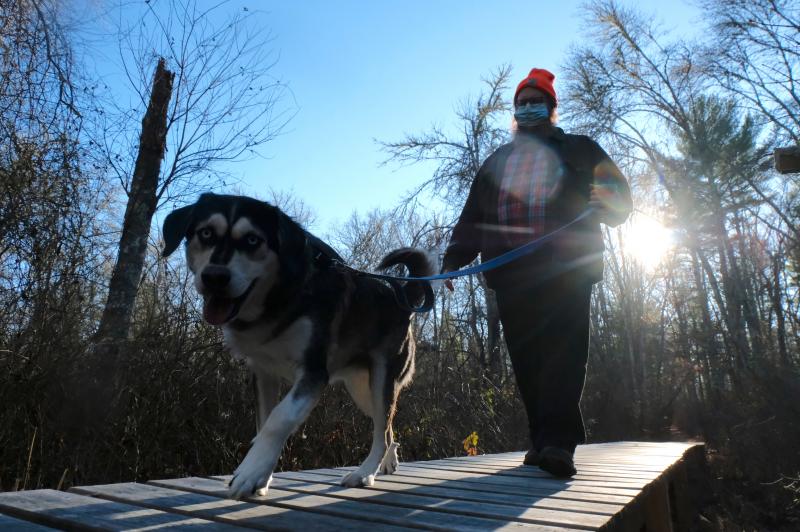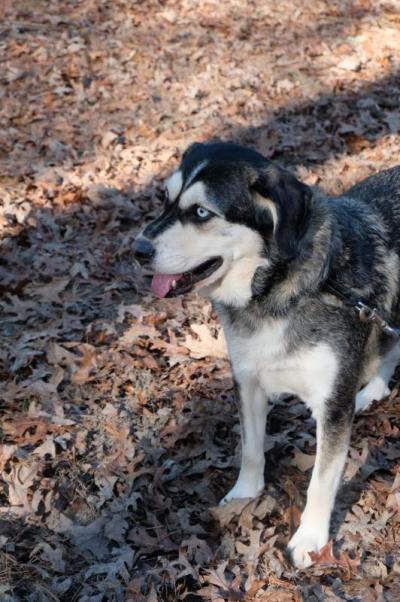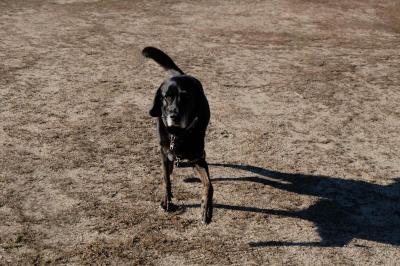Stay, sit, walk: Sippican Lands Trust hosts post-Thanksgiving dog walk
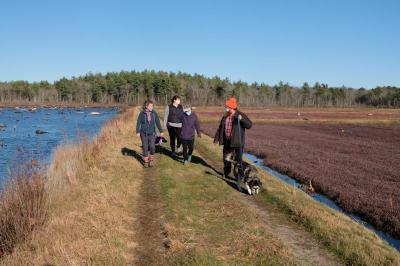
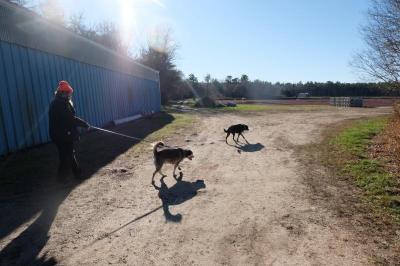
MARION — See spot walk.
A small group came out to the Sippican Land Trust’s White Eagle Bog property for its post-Thanksgiving dog walk on Nov. 29 to explore the property, learn more about the parcel’s history and ecosystem, and soak up a warm November day.
The trek was led by Land Trust Director Lauren Boucher and her dog Cora. In the back of the pack was President Alan Harris and his dog, Kenai (named after the peninsula in Alaska, although Harris said his dog doesn’t enjoy the cold.)
The group walked through the over-100 year old bogs that are still active to this day, past the freshwater marsh, and through the wooded forest.
The 482-acre property is home to several rare and threatened species including the Eastern Box Turtle, the Spotted Turtle and the Water-will Stem Borer (a type of moth).
Though none of the endangered species were spotted on the walk, Harris did see a cloud of crows flying above the freshwater marsh near the bogs.
He pointed out that this was uncommon, as the crow population was severely affected by an outbreak back in the ‘90s of Eastern equine encephalitis, a mosquito-borne disease which causes a rare but serious and often deadly swelling in the brain. Although humans can contract it, crows are also prone to the disease.
The disease wasn’t as big of an issue this year, Harris said, because of the drought the Tri-Town faced.
Boucher frequently walks the bogs, and observed that the freshwater marsh dried up over the summer during the drought’s peak.
This is in stark contrast to back in 2015 when the property was dumped on with snow.
Boucher went cross country skiing at the property, and the snow was so deep at one point that she became stuck in it and had to use all her strength to get out.
While the walk was a time to learn more about the property and a time to enjoy the beautiful day, for Cora and Kenai, it was a long walk with an endless amount of things to sniff and a time to explore the property and mark their territory.



